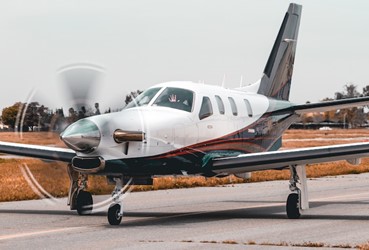Sidney Lebental is a hobby pilot with private, commercial, and multi-engine licensure and top rated in Phenoms (otherwise known as light jet). In the following article, Sidney Lebental breaks down the mechanics behind how the world took flight.
Looking up at the sky whenever a plane roars by is an instinctual reflex for many. But marveling at the underbellies of these cloud-touching vehicles posits another question —
how on earth do those huge machines fly?
Sidney Lebental explains that flight fascination has fueled the motivation tanks of many notable inventors and scientists, prompting them to discover and advance aerodynamics for hundreds of years. While the physics behind flight escaped these mighty brains for millennia, today's mathematics deftly describes the phenomena, helping professionals create big yet agile flying vessels.
The Basic Physics Behind the Flight Phenomenon
Sir Isaac Newton's three laws of motion underpin the basic physics behind flight.
- Every in-motion object will remain that way unless an external force alters it.
- Objects with more mass require more force to change their speed or direction.
- Every force has an equal opposing force.
Sidney Lebental says that aerodynamics involves a combination of four distinct forces — gravity, drag, lift, and thrust. And the three laws of motion are wholly at play here, allowing engineers to craft airplanes that fly across the skies seemingly effortlessly.
The Four Essential Forces for Flight
While the equations involved in determining whether a vessel will fly are rather complex, the four forces responsible for taking off, moving forward, slowing down, and landing can be distilled to simplicity, according to aerodynamics experts.
Thrust
Thrust propels the aircraft forward. Sidney Lebental explains that it involves the plane's propeller or engine applying mechanical force to keep it moving in the chosen direction.
Lift
Lift pushes the plane upward, allowing for take-off.
Sidney Lebental says that airplanes have carefully crafted wings (known as airfoils) that move the air atop the wings quicker than the air beneath them. This motion creates higher pressures under the wing, and it's this pressure distance that achieves the upward force.
Drag
Airplanes are purposefully designed with bullet-esque body lines to prevent increased drag or resistance. The skinny, pointed-nose build allows aircraft to fly through the air without resistance slowing it down.
Sidney Lebental reports that if airplanes had wider surface areas, they would need to push more air away, thus necessitating more energy to carry them forward.
Weight (Gravity)
Everything on Earth is subject to gravity (i.e., downward force), even airplanes. And, as Sir Isaac Newton's laws of motion suggest, the heavier/larger the object, the greater the force of gravity.
Lighter aircraft need less lift and thrust to take off and stay in the air. Moreover, Sidney Lebental explains that adding weight at the back of a plane shifts the vessel's center of gravity.
Balancing the Forces for Flight
Without gravity, lift, drag, and thrust, nothing would fly — including birds! However, Sidney Lebental reports that aeronautics engineers must ensure their aircraft balances the forces perfectly to achieve the desired flight. This part of the process requires knowledge of complex mathematical and scientific equations.

 No Matter the Aircraft, the Same Forces Are at Work
No Matter the Aircraft, the Same Forces Are at Work
Evidently, Sidney Lebental states that planes aren't the only forms of aircraft seen cruising at high altitudes. But despite how different they visually appear, industry participants note that they all use the same integral forces to achieve flight — they just use them in slightly different ways.
Helicopters
Helicopters, for example, use the same design principles as airplanes, even though their outward aesthetic seems worlds apart. While planes have wings on the side and a frontal propeller, helicopters boast directional rotors on the top.
Sidney Lebental says that pilots are taught to angle the rotor to manipulate the generation of thrust and lift — when the rotor is angled down, the helicopter moves forward; angling it upward causes backward flight.
All vessels are fitted with a stabilizing rotor on the wing to ensure it never spins. Plus, it allows the pilot to yaw right or left without affecting the pitch and roll.
Rockets
Public perception may lead many to believe that explaining
the flight phenomenon in rockets is the most challenging — that would be wrong. In fact, it's the easiest to explain. However, the mechanisms allowing said flight are difficult to replicate on a scale large enough to successfully break Earth's atmosphere.
The Basic Science of Flight, Explained
Flight will unbeatably continue to fascinate the population for generations. But the knowledge and technology at scientists' disposal today allow them to test the limits of the phenomenon and further their discoveries.
https://www.e-aircraftsupply.com/aircraft_products/file/physics-of-flight.aspx

 No Matter the Aircraft, the Same Forces Are at Work
No Matter the Aircraft, the Same Forces Are at Work